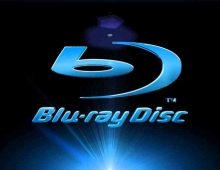
DVD And Blu-ray Discs Remain Preferred Sources of Video Content
The majority of online U.S. adults obtain the video content they watch from traditional television programming. However, a significant number of viewers are still relying on other sources such as optical discs, a recent research shows.
The 79% of U.S. consumers enjoy video content through television programming providers such as cable, satellite or fiber-to-the-home, according to a research released today by the Consumer Electronics Association (CEA). However, DVD/Blu-ray discs (66%), free video streaming services (47%) and paid video streaming services (37%) are also common sources of video content.
 While online video streaming is more common among younger consumers ages 18-34, use of traditional television programming is consistent for most age groups, suggesting that these emerging online services are being used in addition to, rather than instead of, traditional television programming.
While online video streaming is more common among younger consumers ages 18-34, use of traditional television programming is consistent for most age groups, suggesting that these emerging online services are being used in addition to, rather than instead of, traditional television programming.
"Access to faster Internet speeds and dramatic advances in mobile technology have changed the face of video content delivery and consumption," said Kevin Tillmann, senior analyst, CEA. "However, digital content is not necessarily a substitute for traditional content sources, but instead an additional source from which U.S. consumers can quench their insatiable thirst for video content."
While more than half (53 percent) of consumers say they skip commercials, traditional television programming is critical to the discovery of new video content, for both movies and TV shows:
- The sources consumers use most frequently to discover new movies are channel surfing (44 percent), on-screen program guides (44 percent), previews at the movie theater (39 percent), commercials on TV (39 percent) and word of mouth (37 percent).
- The leading ways consumers discover TV shows are channel surfing (50 percent), on-screen program guides (47 percent), TV commercials (47 percent), word of mouth (34 percent) and network websites such as NBC or CBS (27 percent).
CEA's styudy showed that DVD/Blu-ray disc are often preferred over digital downloads because consumers indicate they like owning a physical product (52 percent) and the ability to watch using their DVD/Blu-ray player (50 percent). However, over three-fourths (77 percent) of online consumers own at least some digital video content. The top reasons for choosing digital content include the ability to access it from anywhere (36 percent), ease of storage (35 percent), price (32 percent), instant access to content (32 percent) and the ability to watch on an Internet connected device (27 percent).
Physical formats are critical when it comes to movies as most consumers who watch movies obtain them on DVD or Blu-ray disc. Three-fourths (74 percent) purchase, rent or receive their movies on these physical formats, while only 24 percent acquire them via digital download.
Laptops (52 percent), desktop PCs (44 percent) and HDTVs (40 percent) are the most commonly used devices for watching streamed or downloaded video content. A third of consumers view video content on smartphones (32 percent) and tablets (31 percent), CEA said.
CEA's report represents the findings of a quantitative study administered via Internet web form to an online national sample of 1,001 U.S. adults.
 While online video streaming is more common among younger consumers ages 18-34, use of traditional television programming is consistent for most age groups, suggesting that these emerging online services are being used in addition to, rather than instead of, traditional television programming.
While online video streaming is more common among younger consumers ages 18-34, use of traditional television programming is consistent for most age groups, suggesting that these emerging online services are being used in addition to, rather than instead of, traditional television programming.
"Access to faster Internet speeds and dramatic advances in mobile technology have changed the face of video content delivery and consumption," said Kevin Tillmann, senior analyst, CEA. "However, digital content is not necessarily a substitute for traditional content sources, but instead an additional source from which U.S. consumers can quench their insatiable thirst for video content."
While more than half (53 percent) of consumers say they skip commercials, traditional television programming is critical to the discovery of new video content, for both movies and TV shows:
- The sources consumers use most frequently to discover new movies are channel surfing (44 percent), on-screen program guides (44 percent), previews at the movie theater (39 percent), commercials on TV (39 percent) and word of mouth (37 percent).
- The leading ways consumers discover TV shows are channel surfing (50 percent), on-screen program guides (47 percent), TV commercials (47 percent), word of mouth (34 percent) and network websites such as NBC or CBS (27 percent).
CEA's styudy showed that DVD/Blu-ray disc are often preferred over digital downloads because consumers indicate they like owning a physical product (52 percent) and the ability to watch using their DVD/Blu-ray player (50 percent). However, over three-fourths (77 percent) of online consumers own at least some digital video content. The top reasons for choosing digital content include the ability to access it from anywhere (36 percent), ease of storage (35 percent), price (32 percent), instant access to content (32 percent) and the ability to watch on an Internet connected device (27 percent).
Physical formats are critical when it comes to movies as most consumers who watch movies obtain them on DVD or Blu-ray disc. Three-fourths (74 percent) purchase, rent or receive their movies on these physical formats, while only 24 percent acquire them via digital download.
Laptops (52 percent), desktop PCs (44 percent) and HDTVs (40 percent) are the most commonly used devices for watching streamed or downloaded video content. A third of consumers view video content on smartphones (32 percent) and tablets (31 percent), CEA said.
CEA's report represents the findings of a quantitative study administered via Internet web form to an online national sample of 1,001 U.S. adults.





















